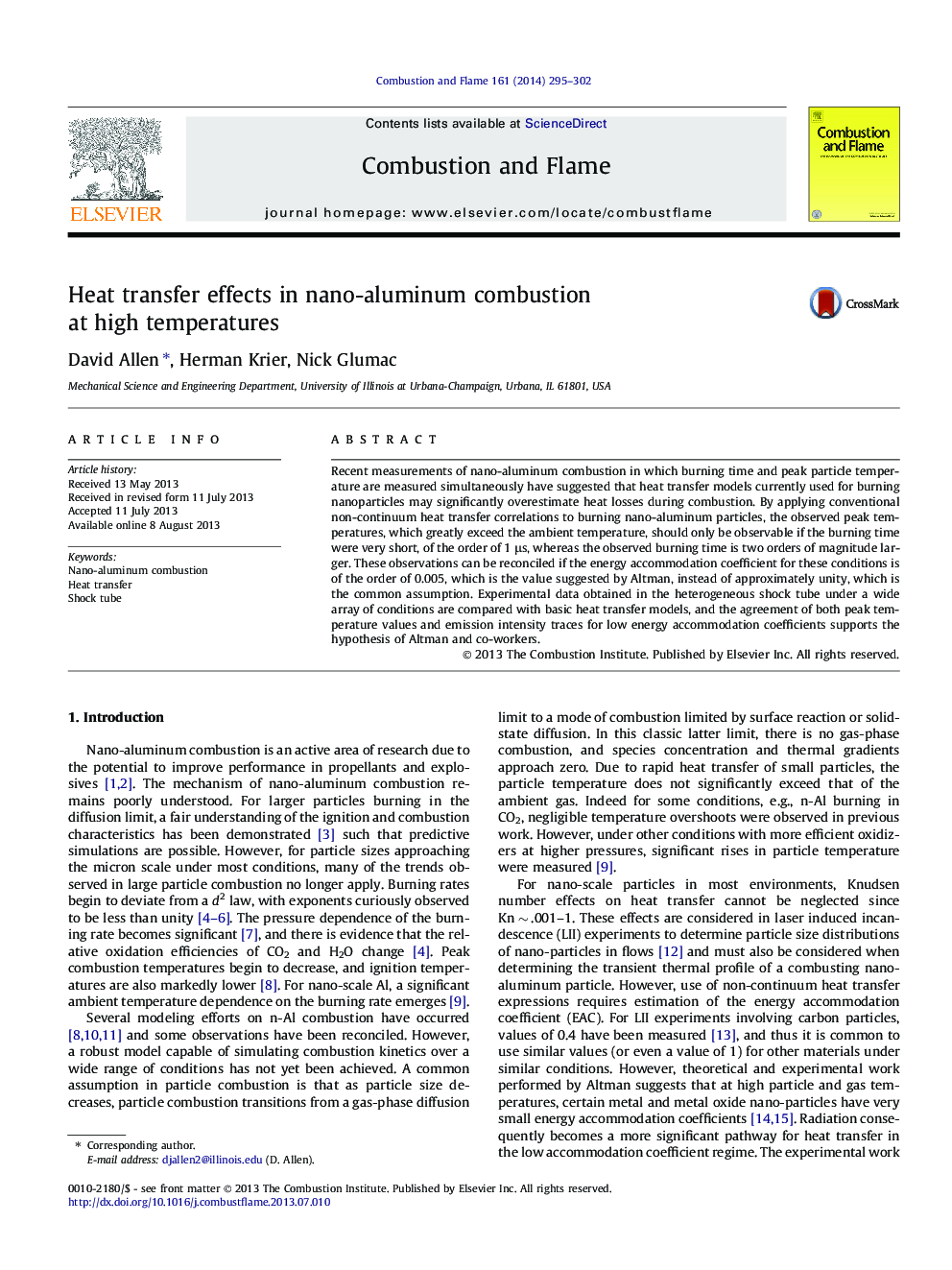| Article ID | Journal | Published Year | Pages | File Type |
|---|---|---|---|---|
| 168812 | Combustion and Flame | 2014 | 8 Pages |
Recent measurements of nano-aluminum combustion in which burning time and peak particle temperature are measured simultaneously have suggested that heat transfer models currently used for burning nanoparticles may significantly overestimate heat losses during combustion. By applying conventional non-continuum heat transfer correlations to burning nano-aluminum particles, the observed peak temperatures, which greatly exceed the ambient temperature, should only be observable if the burning time were very short, of the order of 1 μs, whereas the observed burning time is two orders of magnitude larger. These observations can be reconciled if the energy accommodation coefficient for these conditions is of the order of 0.005, which is the value suggested by Altman, instead of approximately unity, which is the common assumption. Experimental data obtained in the heterogeneous shock tube under a wide array of conditions are compared with basic heat transfer models, and the agreement of both peak temperature values and emission intensity traces for low energy accommodation coefficients supports the hypothesis of Altman and co-workers.
